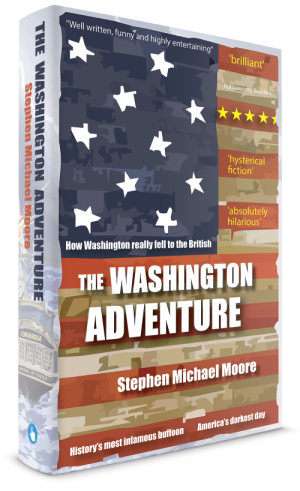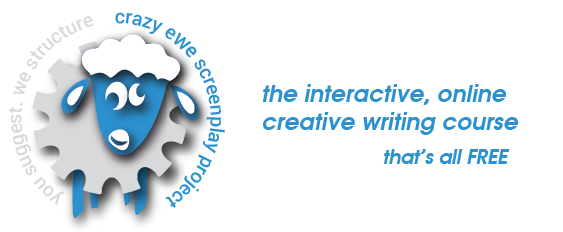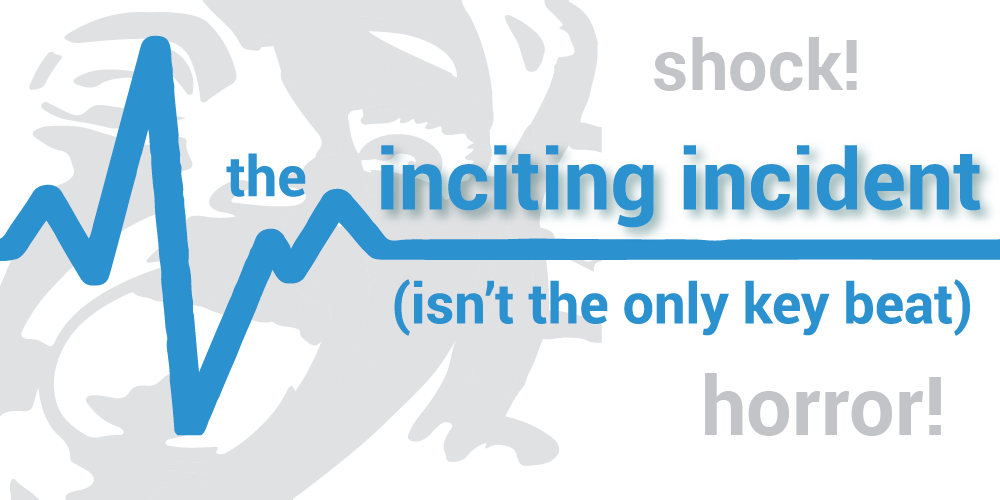
The Inciting Incident Isn't The Only Key Story Beat
It's funny that the only Key Story Beat that most people have ever heard of is the Inciting Incident. I accept that it's only funny to me because I'm sad and don't get out much but... Come On! There are six key beats in story telling - and it's time they got better press. So this is me raising a glass of Pinot Grigio to all six of the little blighters. Without them, the modern screenplay would just be wandering up and down a beach at Cannes desperately looking for its lounger - by which I mean it would be lost, of course.
Can anyone name a key beat that isn't the inciting incident?
The Six Key Beats are what creates the rollercoaster for the audience. The various graphics below provides irrefutable proof of that fact! The beats create an action line with highs and lows in order to create a pendulum effect of hope and fear. Will the hero succeed or won't they. Will they save the world, get the girl, find a cure for baldness... oh, wait - i meant find a cure for a deadly nerve toxin. Sorry, my bad. The highs and lows are created by the hero's game of cat and mouse with the antagonist and with the hero wrestling throughout with their own inner demons.
The inciting incident
The first key beat is the inciting incident (often confused with the call to adventure). The antagonist’s plan has impacted on the hero’s real world. The pair are now connected. The hero may not see the link or fully understand it, but the audience knows. Importantly, the hero ‘refuses’ to get involved. They do this because a weakness or flaw means they feel they aren’t ready.
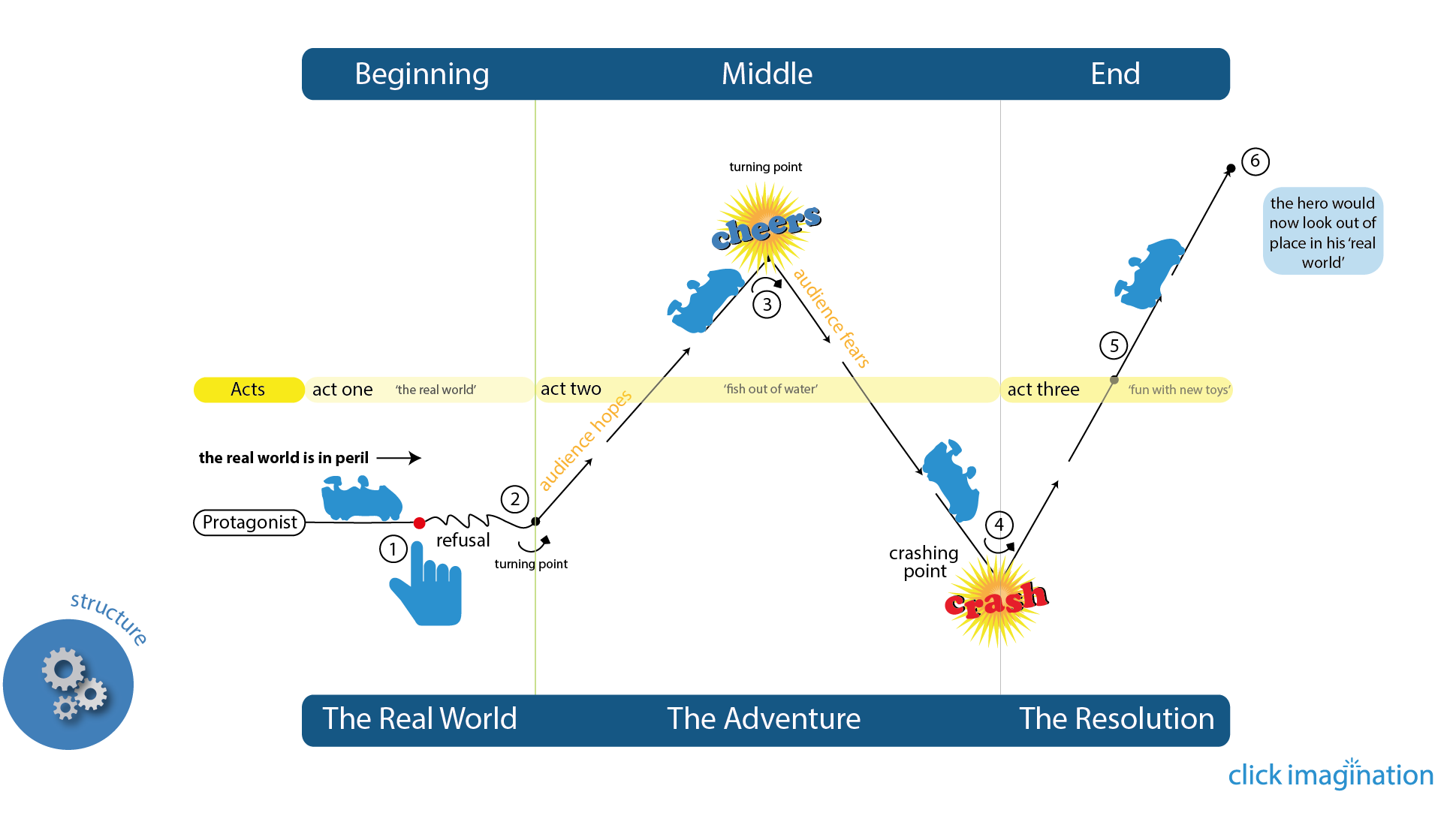
Refusing the call to adventure is critical.
The Second Act Threshold
This is the point where we enter Act 2. It is the start of the adventure and often symbolised by a journey. By this point, the antagonist’s plan is clearly established and so too the hero’s objective i.e. the Main Tension. The main tention is the objective that will carry the whole story.
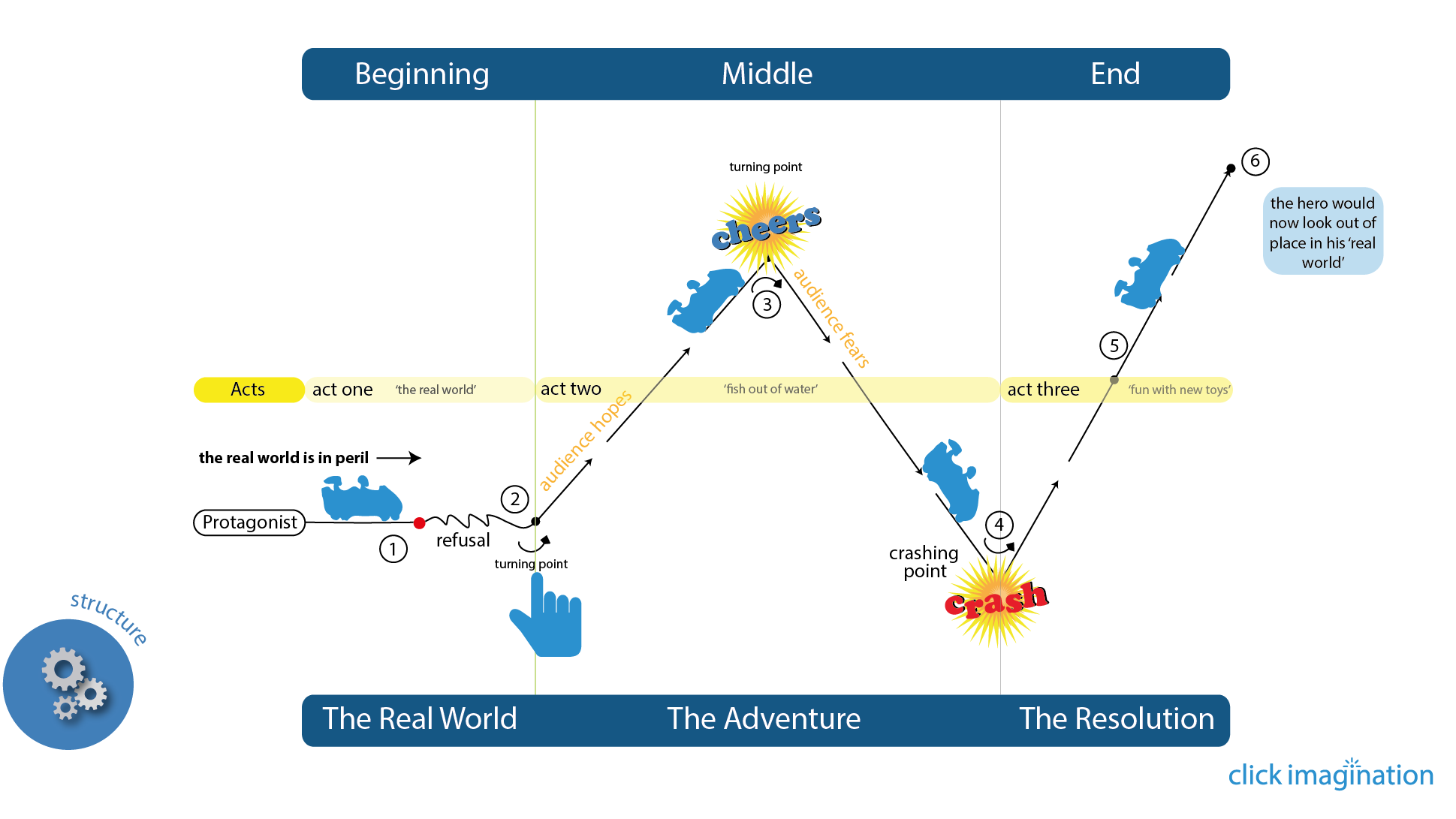
The Highpoint
The hero is closest to their objective and has succeeded despite their ‘weakness or flaw’. It’s worth noting at this point that in the first half of Act 2, the audience has great hope the hero will succeed. In the second half of Act 2 (beat 3 onwards) the audience fear he or she will fail.
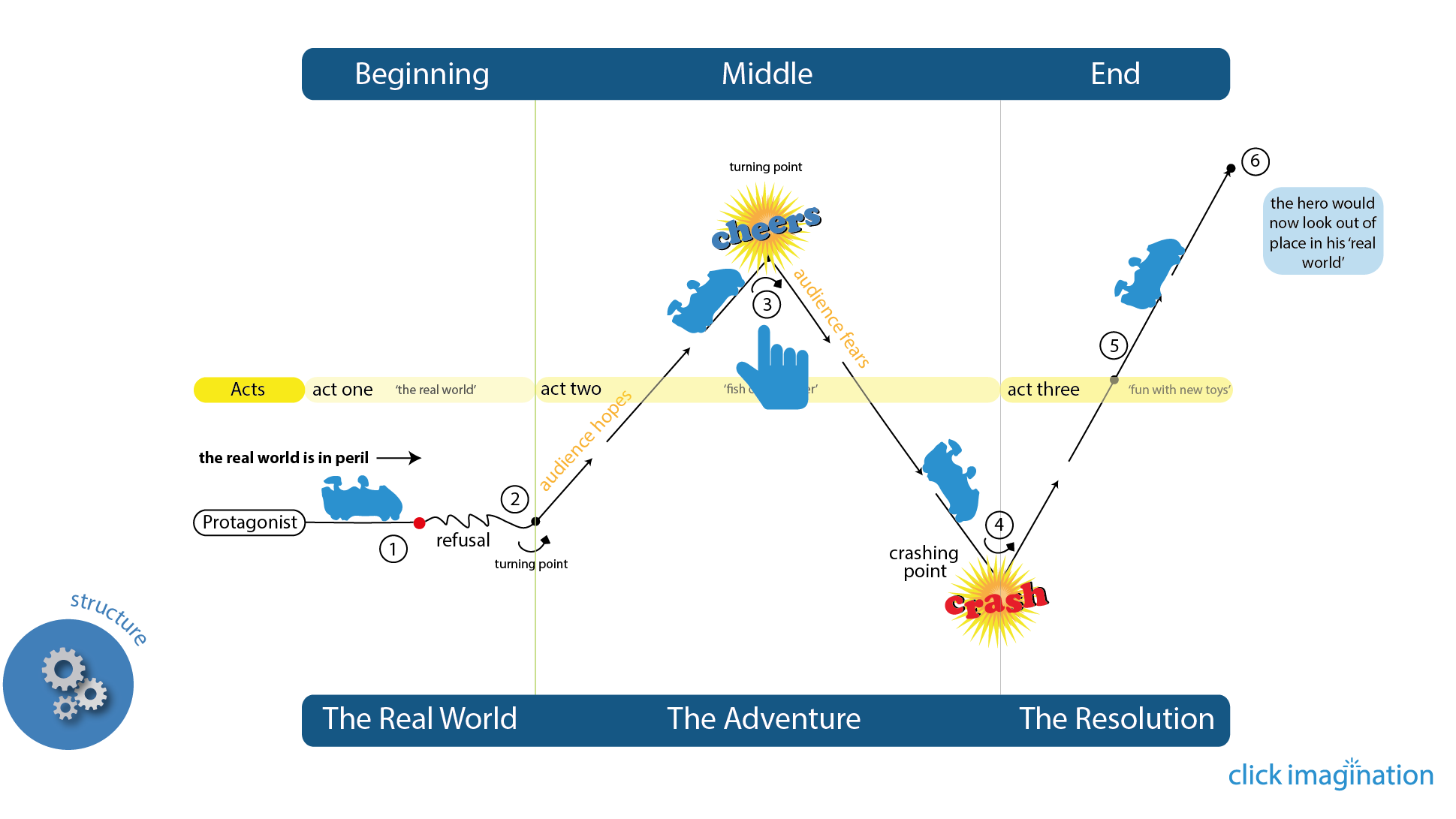
The Lowpoint
The hero has failed in their objective. He or she was not ready for the adventure and the reason they ‘refused’ in Act 1, because of their weakness or flaw, has meant the antagonist has prevailed.
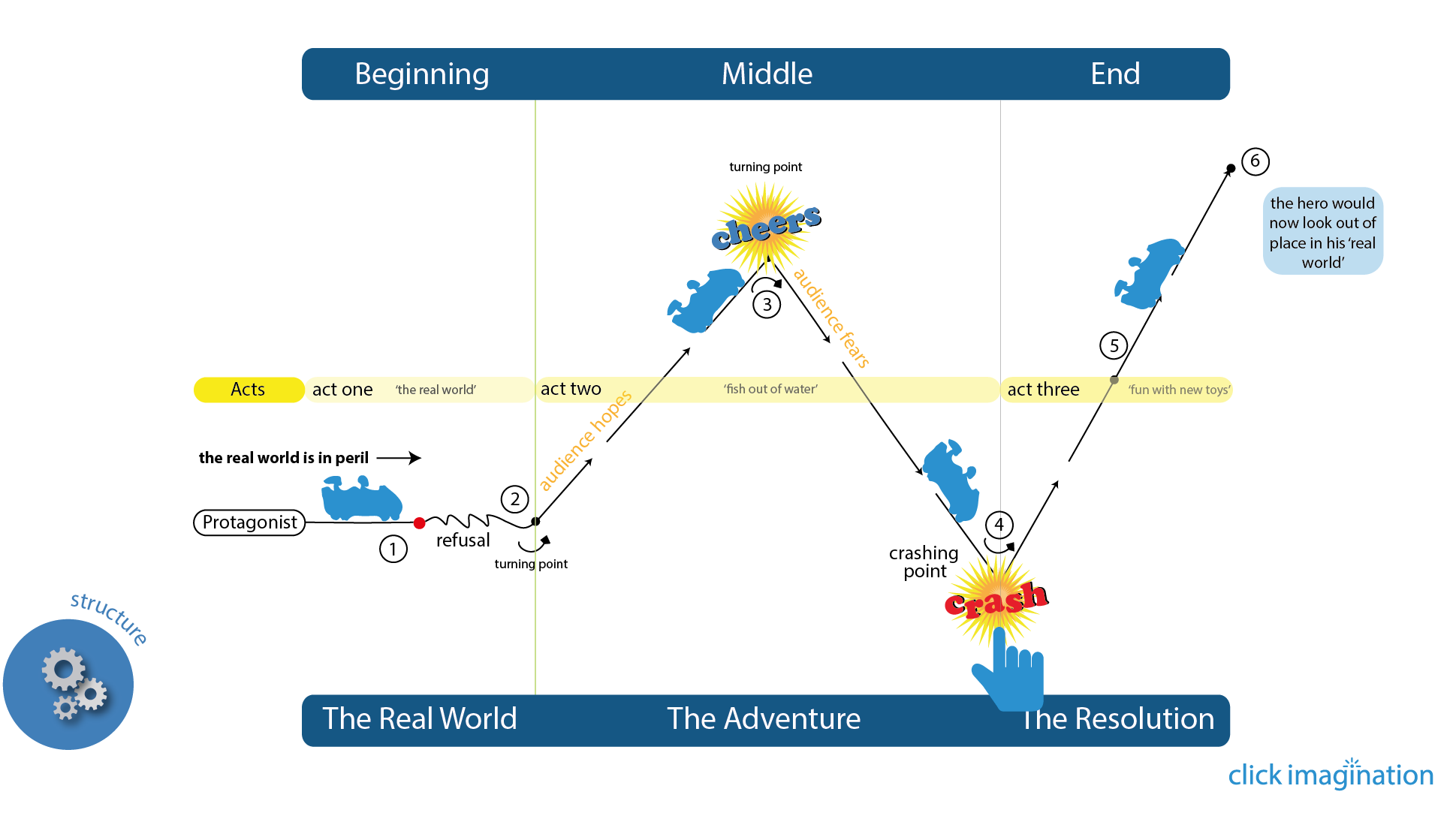
The False Resolution or Twist
The fifth beat is the 'false resolution' or 'twist'. It's called the False Resolution because we believe the story will end at this point with the antagonist succeeding or we believe the hero has prevailed and the antagonist has been killed. But (gasps from the audience)... the antagonist isn't actually dead! They were just pretending... or having a nap. Either way, they are back on their feet and walking zombie-like towards our unarmed hero with their pistol levelled. This beat causes the hero to see their weakness or flaw and, by doing so, are ready to take on the antagonist for real in the climax. Intense!
...or this beat is a 'Twist'. There is a revelation that shifts the perception of the entire film so far. Think of the twist in The Usual Suspects... no, the other twist before the twist that everyone remembers! If you're thinking of having a twist in your movie go and watch The Usual Suspects at once (age dependant of course).
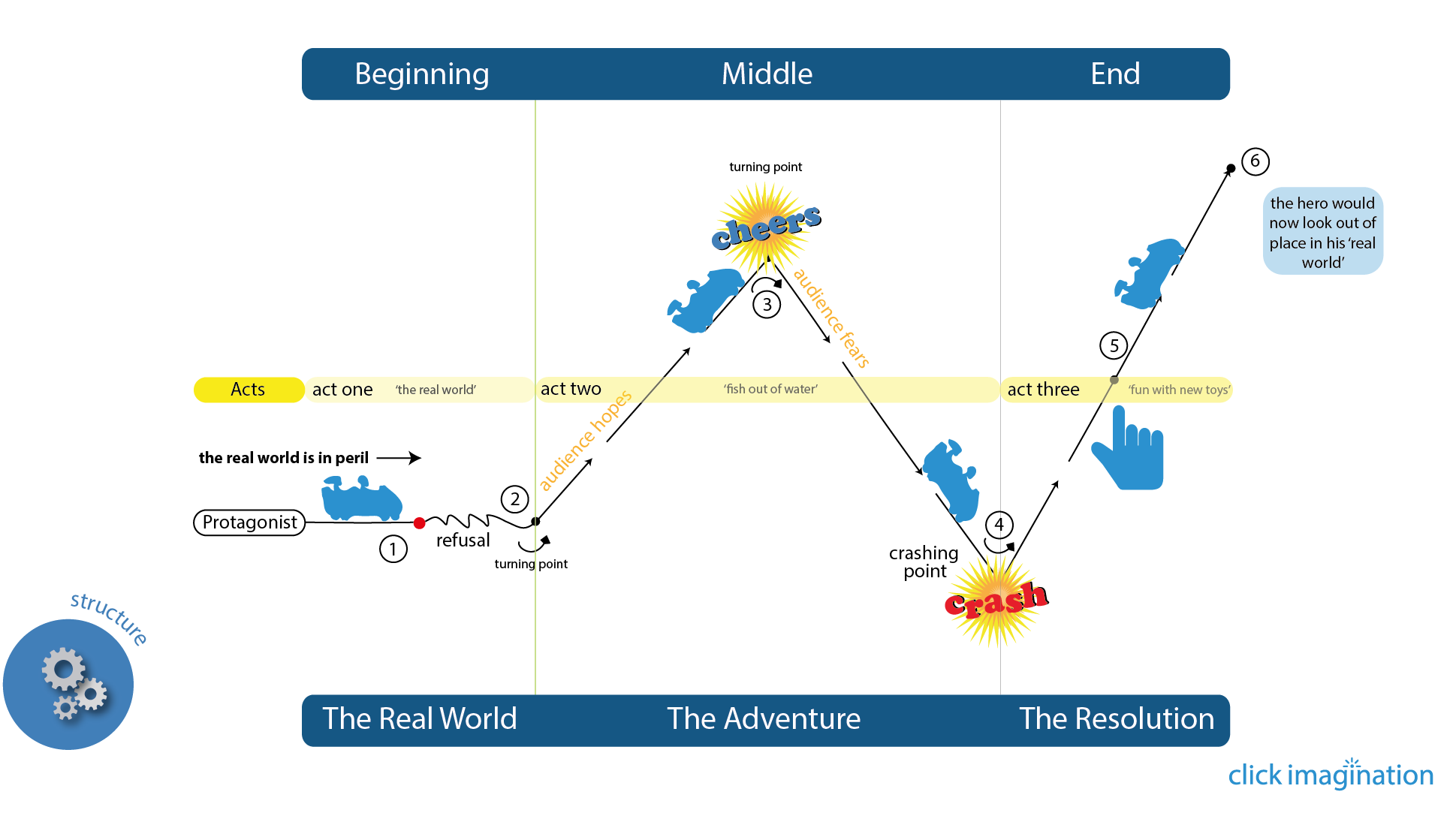
The Climax
Beat 6 is The climax. The hero prevails. Balance is restored and the hero is better for their adventure. If you were able to transport the hero back to Act 1, they would now look out of place. They have grown because of their adventure.
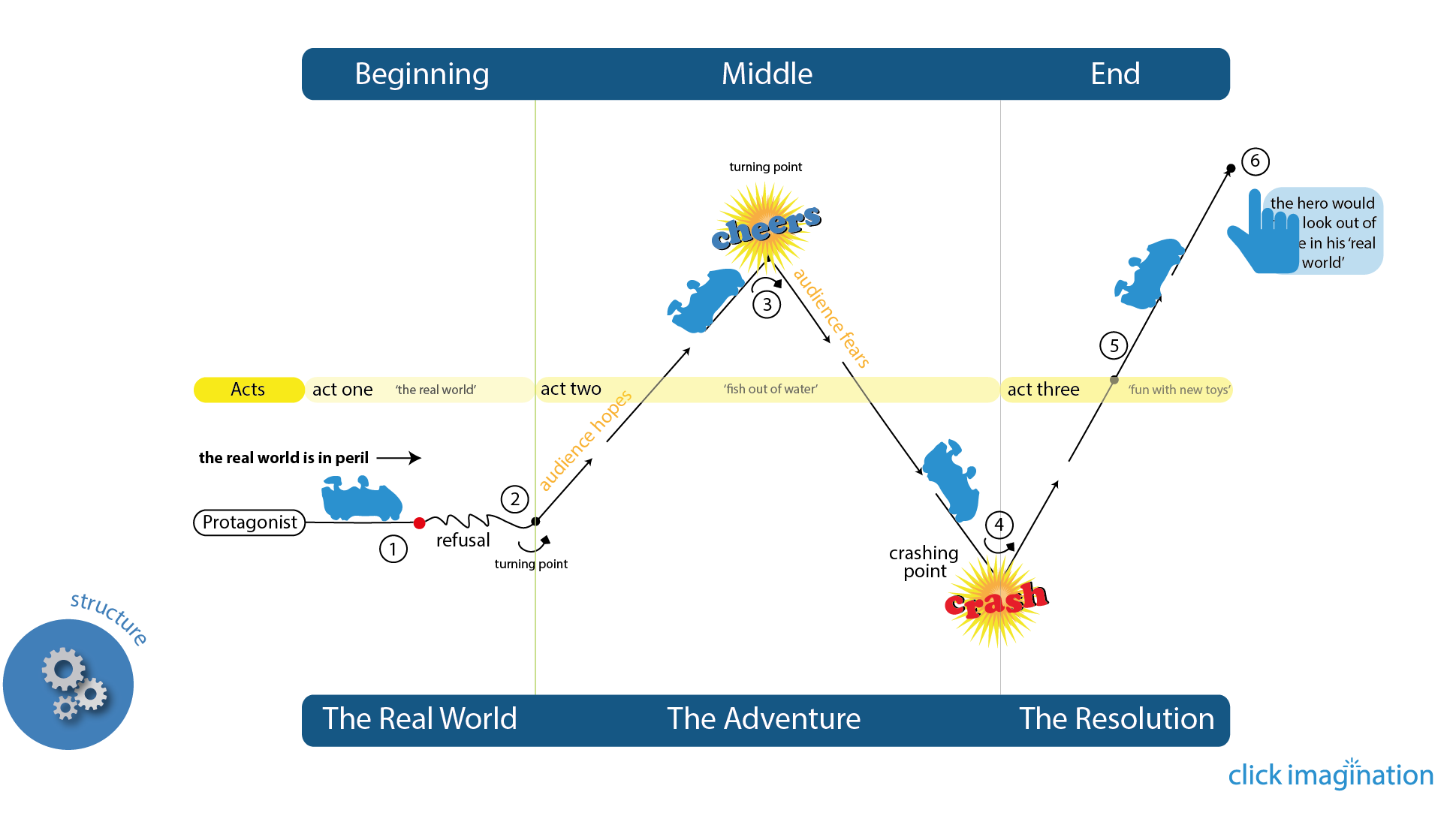
Turning Points
So now let’s look in more detail at the unfamiliar turning points. Firstly, the end of Act Two. It’s important that the hero can’t turn back. They are moving forwards all the time. It’s Neo taking the blue pill in the Matrix, or Sandra Bullock’s character drifting free in space in Gravity.
Beats 3 & 4 are crucial to Act Two. They represent the highs and lows and create the roller coaster ride for the audience. The audience really needs to emotionally feel these beats.
Again, think of Act 2 as a pendulum that’s constantly swinging the audience between hope and fear. Not just in the key beats but in the plot that sits between them. This shouldn’t be generated artificially by plot devices but rather the driving forces of the antagonist and the protagonist themselves.
OK, let’s Recap
We know that act structure determines the beginning, the middle and the end of the story and we also know that the Six Key Story Beats determine the emotional rollercoaster ride for the hero and the audience - let’s now go back and fill in the spaces between those beats - with themed sequences.
Why not test your own project against these beats by downloading our free structure worksheet.
Check out the Structure Chart and Worksheet that accompany this website and use it to test your own stories.
Now we have a clear idea of the six Key Story Beats let's explore the use of sequences to fill in the gaps between those beats. Click here to learn about sequences in screenplays.

'William Peel is a brilliant character, an aristocratic buffoon– so wealthy he is beyond reproach, and lacking any self awareness, he makes for a superbly comic protagonist. This is a brilliant example of the historical comedy genre.'
Harper Collins
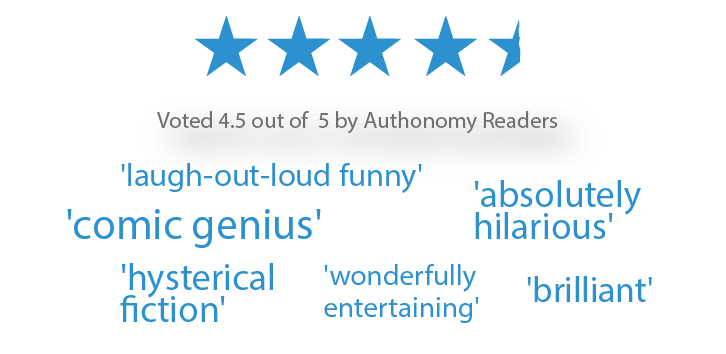
'A conversation with William Peel is like being stabbed in the head with a blunt knife covered in goat excrement'
The Prince Regent, 1814
'It’s a failing of the common man that he mistakes arrogance for simply the behaviour of his betters'
William Peel, Lord of Tornbridge

